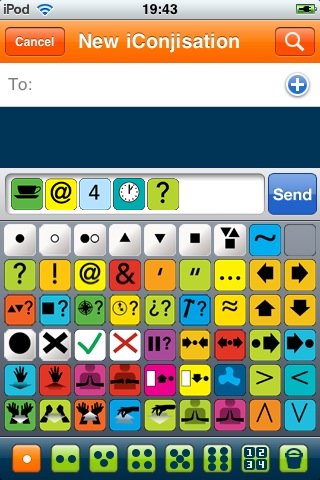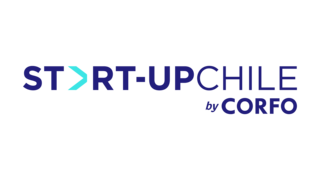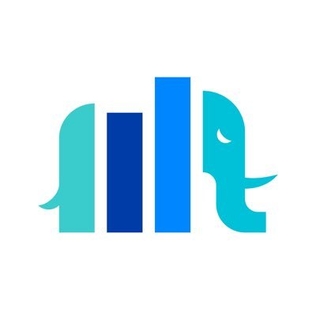Speech synthesis is the artificial production of human speech. A computer system used for this purpose is called a speech synthesizer, and can be implemented in software or hardware products. A text-to-speech (TTS) system converts normal language text into speech; other systems render symbolic linguistic representations like phonetic transcriptions into speech. The reverse process is speech recognition.

A screen reader is a form of assistive technology (AT) that renders text and image content as speech or braille output. Screen readers are essential to people who are blind, and are useful to people who are visually impaired, illiterate, or have a learning disability. Screen readers are software applications that attempt to convey what people with normal eyesight see on a display to their users via non-visual means, like text-to-speech, sound icons, or a braille device. They do this by applying a wide variety of techniques that include, for example, interacting with dedicated accessibility APIs, using various operating system features, and employing hooking techniques.

A telecommunications relay service, also known as TRS, relay service, or IP-relay, or Web-based relay service, is an operator service that allows people who are deaf, hard of hearing, deafblind, or have a speech disorder to place calls to standard telephone users via a keyboard or assistive device. Originally, relay services were designed to be connected through a TDD, teletypewriter (TTY) or other assistive telephone device. Services gradually have expanded to include almost any real-time text capable technology such as a personal computer, laptop, mobile phone, PDA, and many other devices. The first TTY was invented by deaf scientist Robert Weitbrecht in 1964. The first relay service was established in 1974 by Converse Communications of Connecticut.

Google Talk was an instant messaging service that provided both text and voice communication. The instant messaging service was variously referred to colloquially as Gchat, Gtalk, or Gmessage among its users.

Augmentative and alternative communication (AAC) encompasses the communication methods used to supplement or replace speech or writing for those with impairments in the production or comprehension of spoken or written language. AAC is used by those with a wide range of speech and language impairments, including congenital impairments such as cerebral palsy, intellectual impairment and autism, and acquired conditions such as amyotrophic lateral sclerosis and Parkinson's disease. AAC can be a permanent addition to a person's communication or a temporary aid. Stephen Hawking, probably the best-known user of AAC, had amyotrophic lateral sclerosis, and communicated through a speech-generating device.
A voice-user interface (VUI) enables spoken human interaction with computers, using speech recognition to understand spoken commands and answer questions, and typically text to speech to play a reply. A voice command device is a device controlled with a voice user interface.

Windows Speech Recognition (WSR) is speech recognition developed by Microsoft for Windows Vista that enables voice commands to control the desktop user interface, dictate text in electronic documents and email, navigate websites, perform keyboard shortcuts, and operate the mouse cursor. It supports custom macros to perform additional or supplementary tasks.

Speech-generating devices (SGDs), also known as voice output communication aids, are electronic augmentative and alternative communication (AAC) systems used to supplement or replace speech or writing for individuals with severe speech impairments, enabling them to verbally communicate. SGDs are important for people who have limited means of interacting verbally, as they allow individuals to become active participants in communication interactions. They are particularly helpful for patients with amyotrophic lateral sclerosis (ALS) but recently have been used for children with predicted speech deficiencies.
Semantic compaction, (Minspeak), conceptually described as polysemic (multi-meaning) iconic encoding, is one of the three ways to represent language in Augmentative and alternative communication (AAC). It is a system utilized in AAC devices in which sequences of icons are combined in order to form a word or a phrase. The goal is to increase independent communication in individuals who cannot use speech. Minspeak is the only patented system for Semantic Compaction and is based on multi-meaning icons that code vocabulary in short sequences determined by rule-driven patterns. Minspeak has been used with both children and adults with various disabilities, including cerebral palsy, motor speech disorders, developmental disabilities, autism spectrum disorder, and adult onset disabilities such as Amyotrophic Lateral Sclerosis (ALS).
Tank Top TV was a website providing personalized programme listings and recommendations for online TV and movies in the United Kingdom.

iConji is a free pictographic communication system based on an open, visual vocabulary of characters with built-in translations for most major languages.
HTML audio is a subject of the HTML specification, incorporating audio input, playback, and synthesis, all in the browser.

Start-Up Chile is a seed accelerator created by the Chilean government, based in Santiago de Chile. It was founded in 2010 with the goal of increasing the number of national and international ventures that are generated in the country.
Libon is a voice over IP application developed for iOS and Android by Orange S.A.’s subsidiary, Orange Vallée. The application is available for free on the App Store and Google Play in 90 countries, including in countries where Orange does not have a presence in the telecommunications industry, such as the United States.

Guide was a US technology startup company developing a newsreader app that translates text from online news sources, blogs and social media streams into streaming audio and video. The company's apps include animal character readers. The company was founded in 2012 by chief executive officer Freddie A. Laker, and privately launched its mobile app in alpha in February 2013.
TextSecure was an encrypted messaging application for Android that was developed from 2010 to 2015. It was a predecessor to Signal and the first application to use the Signal Protocol, which has since been implemented into WhatsApp and other applications. TextSecure used end-to-end encryption to secure the transmission of text messages, group messages, attachments and media messages to other TextSecure users.

Speech Recognition & Synthesis, formerly known as Speech Services, is a screen reader application developed by Google for its Android operating system. It powers applications to read aloud (speak) the text on the screen, with support for many languages. Text-to-Speech may be used by apps such as Google Play Books for reading books aloud, Google Translate for reading aloud translations for the pronunciation of words, Google TalkBack, and other spoken feedback accessibility-based applications, as well as by third-party apps. Users must install voice data for each language.
Michael Phillips is the CEO and co-founder of Sense Labs and a pioneer in machine learning, including mobile speech recognition and text-to-speech technology.

StatMuse Inc. is an American artificial intelligence company founded in 2014. The company maintains its own eponymous website where it hosts a database of sports statistics.











